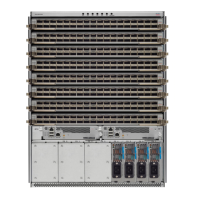• To migrate from RIP to a new Interior Gateway Protocol (IGP) such as EIGRP.
• To retain routing protocol on some routers to support host systems, but upgrade routers for other
department groups.
• To communicate among a mixed-router vendor environment. Basically, you might use a protocol specific
to Cisco in one portion of your network and use RIP to communicate with devices other than Cisco
devices.
Further, route redistribution gives a company the ability to run different routing protocols in work groups or
areas in which each is particularly effective. By not restricting customers to using only a single routing protocol,
Cisco IOS XR route redistribution is a powerful feature that minimizes cost, while maximizing technical
advantage through diversity.
When it comes to implementing route redistribution in your internetwork, it can be very simple or very
complex. An example of a simple one-way redistribution is to log into a router on which RIP is enabled and
use the redistribute static command to advertise only the static connections to the backbone network to pass
through the RIP network. For complex cases in which you must consider routing loops, incompatible routing
information, and inconsistent convergence time, you must determine why these problems occur by examining
how Cisco routers select the best path when more than one routing protocol is running administrative cost.
Default Administrative Distances for RIP
Administrative distance is used as a measure of the trustworthiness of the source of the IP routing information.
When a dynamic routing protocol such as RIP is configured, and you want to use the redistribution feature
to exchange routing information, it is important to know the default administrative distances for other route
sources so that you can set the appropriate distance weight.
This table lists the Default Administrative Distances of Routing Protocols.
Table 6: Default Administrative Distances of Routing Protocols
Administrative Distance
Value
Routing Protocols
0Connected interface
0Static route out an
interface
1Static route to next hop
5EIGRP Summary Route
20External BGP
90Internal EIGRP
110OSPF
115IS-IS
120RIP version 1 and 2
170External EIGRP
Routing Configuration Guide for Cisco NCS 6000 Series Routers, IOS XR Release 6.4.x
368
Implementing RIP
Default Administrative Distances for RIP
